Other Products
 | BERBERINE MAX |
 | AGGR |
 | Custom Clean Collagen Peptides |
 | Restore |
| |
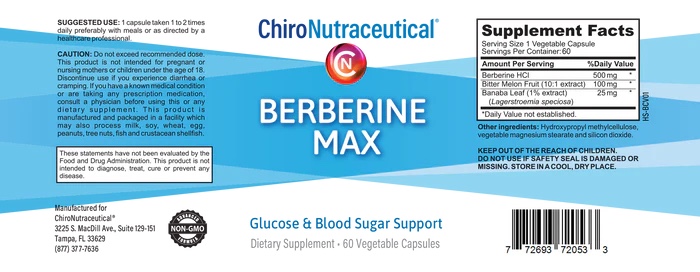
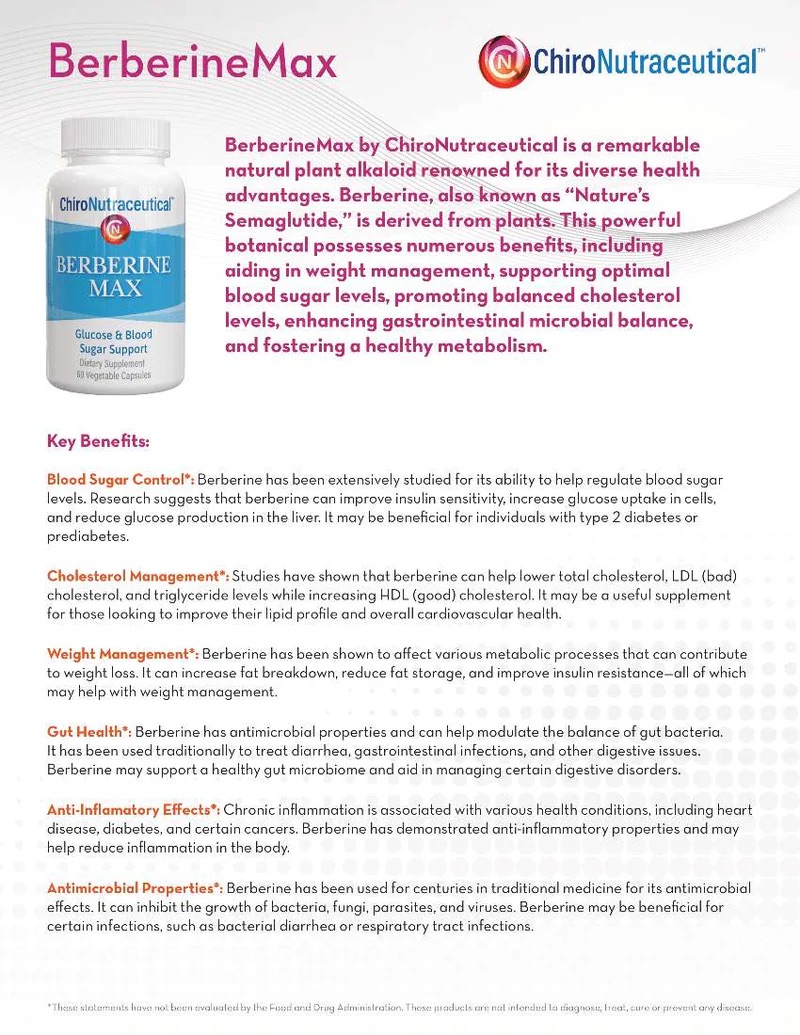
Weight Loss Disclaimer
**The weight loss testimonials and photos presented on this website apply only to the individuals depicted, cannot be guaranteed, and should not be considered typical. Results may be greater than or less than those depicted on this site and can be influenced by other factors, including your metabolic rate, energy expenditure, and diet. As with any health or fitness program, a sensible eating plan and regular exercise are required in order to achieve long-term weight loss.
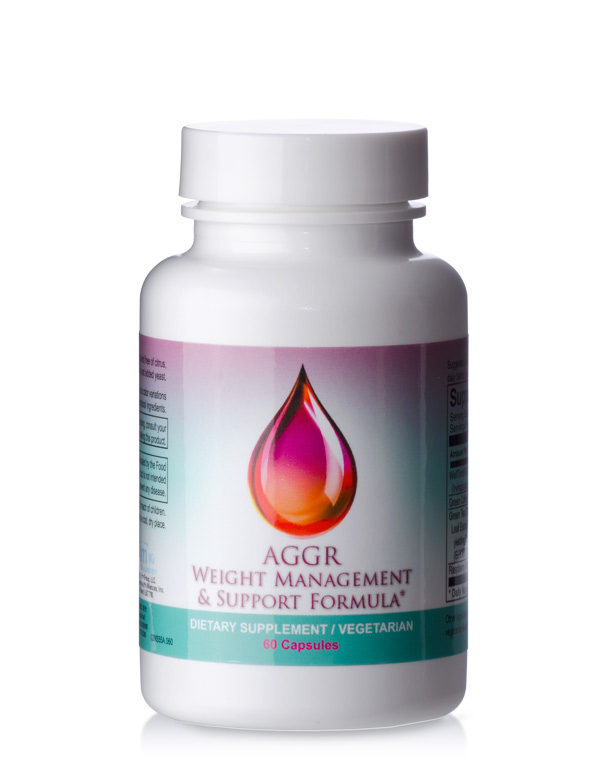
AGGR Supports:
About The Ingredients:
These statements have not been evaluated by the Food and Drug Administration. These products are not intended to diagnose, treat, cure or prevent any disease.
Suggested Use:As a dietary supplement, take 1 capsule twice daily before a meal, or use as directed by your healthcare practitioner.WellTrim® iG is a trademark of Icon Group, LLC.
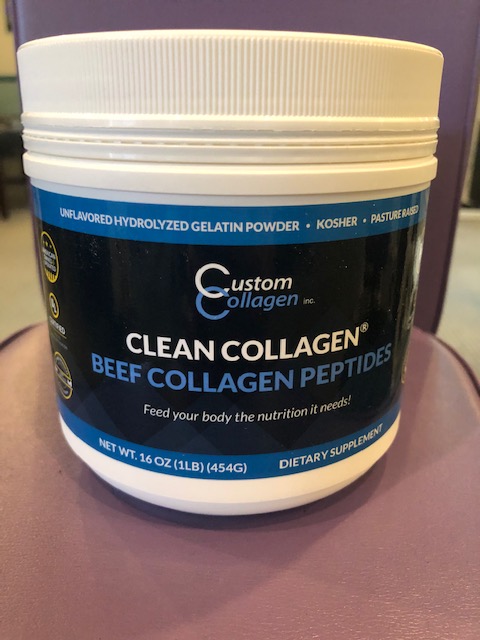

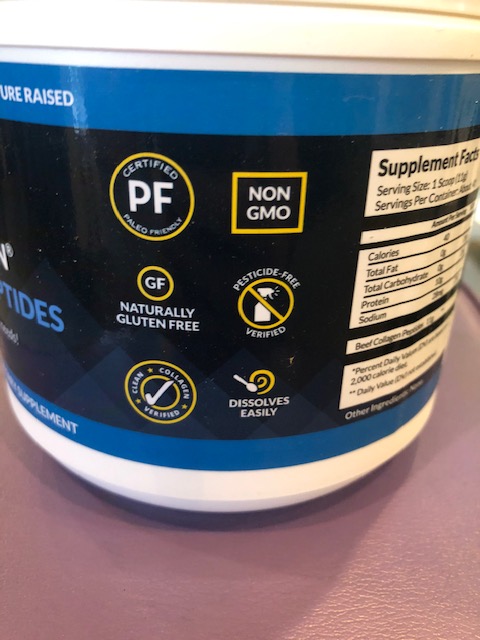

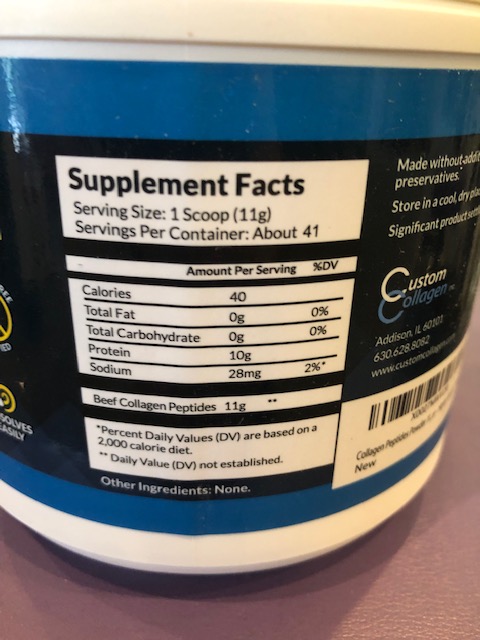

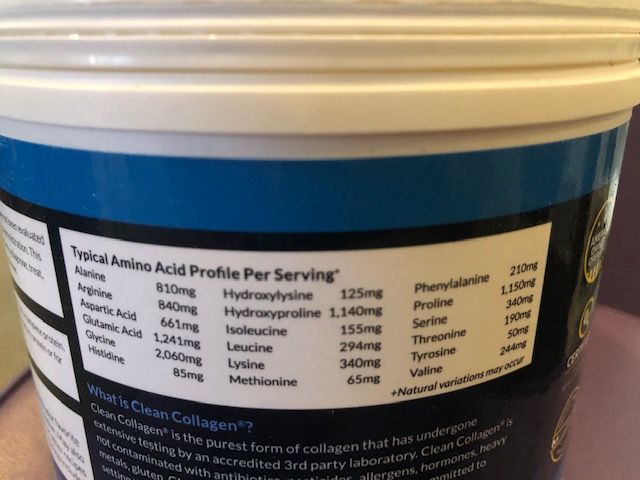
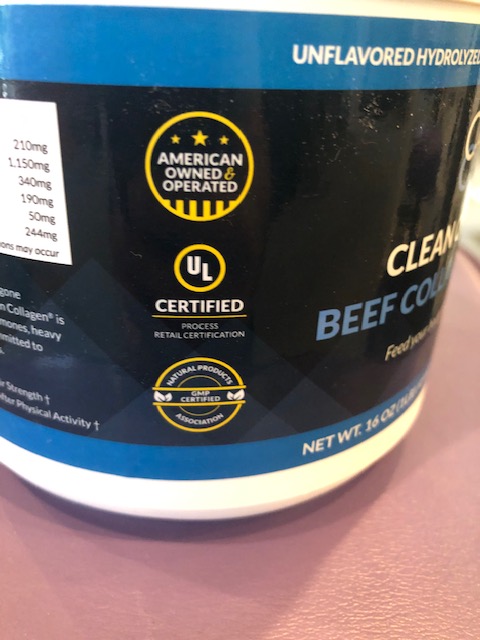
Common uses for this product:
- Joint pain
- Hair and nail strength
- Alternative to soy or whey protein
- Skin tone
- Surgery recovery
- Hashimotos
- Leaky gut syndrome
- Celiac disease
- Paleo applications
This is a premium collagen peptides product that has gone through several in-house testing processes to assure that our quality and purity standards are exceeded. There is absolutely nothing added to this product. When you order a pouch of our Beef Collagen Peptides, you will receive just that! How do we know? We use a superior collagen manufacturer! We see the process from start to finish. We source the material for this product from South American cattle farms that pasture raise their livestock. In addition to our extensive laboratory tests, each pouch is weight checked, goes through metal detection and is tamper evident sealed. This product will easily dissolve in anything with ample liquid. Tea, coffee, yogurt, stew, lemonade, soup, pasta sauce, salsa, you name it! What are your waiting for?! Purchase this product today and start improving your health!
FOR BETTER HEALTH & FLEXIBILITY
Many people around the world are talking about, "the amazing protein", gelatin. Can gelatin really improve a person's health? We believe that it can and does. This amazing protein, gelatin, can even help those suffering from osteoarthritis! Deterioration of the cartilage between the bones is what causes osteoarthritis. When bone rubs against bone, the pain is extreme. Collagen is the necessary ingredient needed to rebuild joint cartilage. Some people do not make enough collagen to replace what is naturally lost. Gelatin contains the two amino acids that make up collagen. We believe this will slow the disease and even help to repair the damage!
Physical & Chemical Properties
The gelatin molecule is made up of amino acids joined together by amide linkages in a long, molecular chain. There are 18 different amino acids in gelatin, each occurring at its own level and sequence in the molecule. Our highest quality spray, dried Hydrolyzed Protein, derived from Beef Hide Collagen, has an added step in the manufacturing process in which air is injected into the gelatin particle, giving it its Instant Dispersal property.
COLLAGEN
Collagen is a highly purified protein derived from beef hide, which is the major structural component in skin, bone, tendons, and other fibrous tissues. The refined extract of collagen forms a clear, viscous solution in water. Gelatin, minus the moisture and a small amount of mineral salt, is a 100% pure soluble protein. The digestibility is excellent. Studies have shown that the consumption of 11 grams per day (2 level tablespoons) can significantly improve nail growth rate, strength and it promotes hair growth. Gelatin has also been shown to benefit arthritis sufferers in a large proportion of cases.
Gelatin Shelf Life
If gelatin is stored in a tightly sealed poly-lined container in normal indoor conditions, it will remain stable indefinitely. The only exception is if the gelatin is kept in a heat above (45°C) 113°F with relative humidity above 60%. In this extreme scenario, the gelatin will gradually lose its ability to swell and dissolve.
What is so special about this particular Hydrolyzed Collagen?
There are many different collagen products available these days. Most are made as cheaply as possible and marketed as the best possible, etc.
Three factors determine any collagen's value:
Bioavailability
Hydrolysis
Source
Bioavailability means uptake at the cellular level. How much gets into the blood and finally into the cells.
The majority of commercial collagens are not well digested and don't even make it as far as the bloodstream, let alone the cells of the body.
The first thing is size of the molecules of the finished product.
If the molecules are too large most will just pass through the body without ever having been used. Molecular weight of collagen products is measured in daltons. Researching the various molecular weights of most collagens available through supplement distributors and stores, the molecular weight is not generally advertised. The reason is that even though the ads often use the phrase Low Molecular Weight, the molecules are usually quite large, in a range of 40,000 - 45,000 daltons. Such large proteins have difficulty being metabolized into building new collagen because of all the activity that has to take place to reduce the molecules to a workable size. As a result most of the collagen in this form is excreted unused from the body.
Hydrolysis is the process by which the raw materials are made into collagen supplements. Most manufacturers use heat, HCl acid and other acids for the final hydrolysis, because it is the least expensive way to go. The problem is that the end product has been damaged by the heat and acids, and may contain residuals as well.
The cleanest way to hydrolyze is by proteolytic enzymes. These secure the integrity of the molecules and the purity of the final product.
The particular natural collagen that we are using has a molecular weight under 3,000 daltons. This is accomplished by hydrolyzing 6-8 separate times, using the enzyme method. It is an expensive process, but the final result has no competitor in the industry.
The third factor is the source. Highest quality Type I collagen must come from cattle raised in an organic natural environment not the hellish environment of corporate agribusiness, exposed in films like Food Inc, and others. The raw collagen is extracted very carefully and then shipped in for the final enzymatic hydrolysis which produces our final product. Best source, cleanest process for splitting molecules into the smallest size, for maximum uptake at the cellular level. Very few producers in the entire world go to all this trouble.
The end result is what you see in your blender when you mix the collagen with juice. Two tablespoons which equals 1 scoop
2 times a day, every single day. Not a drug, loading dose, natural supplement don't miss a day. A couple of months like that and you may well be sending in a wonderful review.
What is collagen?
A polypeptide molecule, collagen is a protein in our bodies. In fact, collagen is the largest and most abundant protein in the body, making up about 65% of our total protein.
Proteins are made of amino acids, such as glycine, proline, arginine, hydroxyproline, which are amino acids that exist in collagen in varying proportions, depending upon the source. As the largest protein in the body, collagen is a chain of over 1500 amino acids.
Collagen is the connective tissue for almost all our structures, including
heart, lungs, arteries, discs, blood cells, skin, muscles, bones, cartilage, liver
other organs, joints, nails, and prostate.
As we age, collagen production drops way off, and any of these systems can be affected. Most common example of collagen decrease: the floorward tendency of our skin and muscles as we age, which doctors call ptosis.
In the organs, decreased collagen causes instability and weakness. Organs like the heart and prostate may enlarge; other organs just get flimsier and weaker. For this type of degenerative problem, drugs rarely work.
Why does collagen production decrease? Hormonal changes, drugs, alcohol, processed food, white sugar, hydrogenated oils, overwork, radiation, fluoridated water, excess sun, nutritional deficits, dehydration, stress, trauma.
COLLAGEN LOSS
What else happens as collagen production decreases? Muscles and skin sag. The bones lose density. The joints and ligaments become weaker and less elastic. Cartilage becomes thinner and weaker at the joints it is supposed to cushion. Hair loses its wave or curl or thickness. Organs may sag toward the floor (prolapse), and may malfunction. The lungs turn to paper. The heart weakens and enlarges. The liver and prostate may weaken and enlarge. The arteries weaken and are less able to resist plaque formation. Also they are more likely to develop a break in one of their 3 layers (aneurysm). The skin becomes thinner and it wrinkles.
Ever notice that kids never lick their fingers for friction when thumbing through the pages of a book only adults do? Collagen breakdown. Ever notice that plastic surgeons often own large houses overlooking the ocean? Collagen breakdown.
COLLAGEN DIGESTION
Normal digestion breaks down protein into peptides and amino acids, which are then absorbed into the bloodstream.
For the collagen protein found in foods and most supplements to be utilized by the body, it must first be broken down many times by the digestive system, and then absorbed through the intestine into the blood in the precise form needed. It's then reassembled into your collagen at the proper site. Protein digestion of dietary collagen is often incomplete, resulting in some very large peptide chains. These long molecules are not well utilized in the body's efforts to keep up with the declining production.
A BETTER IDEA: HYDROLYZED COLLAGEN
With high end collagen supplements, the protein breakdown is pre-engineered and much more thorough, resulting in a more uniform result: usable small chain peptides and amino acids, ready to go.
Quality hydrolyzed collagen supplements are made from high grade gelatin, which has been extracted from cattle hides. The first step of processing separates the skin's outer layer from the inner layer. The outer layer is used in the leather industry. The inner layer is used by the gelatin industry.
Gelatin is 83% protein, 15% water, and 2% minerals.
Gelatin contains all essential human amino acids except tryptophan, including
- Glycine
Proline
Hydroxyproline
Glutamic acid
Alanine
Arginine
Aspartic acid
Others
Many different grades of gelatin can be extracted from the skins, depending on the processing. The gelatin is graded according to the jelling strength of the finished product. Gummy bears for example typify the high end of this spectrum: high jelling strength. The lower end would be exemplified by marshmallows low jelling strength.
Gelatin is also graded by the size of the molecules. Low quality gelatin can have huge molecules, as large as 150,000 daltons or more.
Gelatin has been used for decades in the food industry as a thickening, emulsifying, and jelling agent. Examples: marshmallows, candies, health bars, jello, custards, fillings, canning, etc.
Gelatin has a peculiar triple helix protein chain structure which allows it to liquefy when heated and to solidify when cooled. This is called thermo-reversibility.
The best companies produce a grade of gelatin that is actually used in hospitals as a blood plasma substitute. So we might imagine the strict QC standards for sterility and cleanliness in place in producing collagen of this quality.
Hydrolyzed collagen as a food supplement came about later on, once scientists learned to break the long chain triple helix protein into shorter pieces, and then to separate the 3 helices from each other. The resulting short individual peptides make up hydrolyzed collagen. Cleaving peptides into sections is known as hydrolysis.
DOSAGE
Hydrolyzed Collagen comes in a big pouch: 1lbs. Dosage varies from 2 â€ÃƒÆ’¢€Ãƒâ€¦Ã¢â‚¬Å“ 6 tablespoons per day or 1-3 scoops blended in juice.
How much should you take?
- Acute conditions, injuries, arthritis, etc : 3 tablespoons twice a day, blended in juice.
Maintenance dose, or detox program: 2 tablespoons per day, blended in juice. May be done 2x per day if needed.
This is not a pharmaceutical â€ÃƒÆ’¢€Ãƒâ€¦Ã¢â‚¬Å“ precise amounts are not critical. You could probably take a whole jar in one day with no adverse effects. But that would be wasteful. Maximum absorbed amount would be in the vicinity of 6 tablespoons per day, for most people.
More important is the concept of LOADING DOSE. That means in order to really give this supplement a fair try, you have to take it every single day, until you go through 2 full pouches . Loading dose. Only then will you be able to say you really gave it a try.
Why blended in juice? Much better absorption if the collagen is suspended, we found out. Therefore better results. Any kind of fruit or vegetable juice, organic is better of course, no concentrates, sugar, or other additives.
NO OTHER PROTEIN POWDERS
You read this on the label do not take any other protein powders when you are taking this supplement. Why not? Simple. Our whole philosophy is that we want patients to be taking the least number of supplements possible, spending the least amount of money on supplements, but still giving the body everything it needs for optimum cell nutrition and detoxification. This collagen product has proven conclusively for years that it actually delivers what other protein powders claim to do: rebuilding bones, muscle, arteries, organs, etc all the structures listed in the paragraphs above. If you're taking several protein supplements, how would you know what does what?
Other protein supplements must first be digested by your body, broken down into the component peptides and amino acids that are the bulding blocks of your body's own new collagen. This product skips all those preliminary steps, and starts right off with the most bioavailable building blocks themselves, going to work immediately, thereby exponentially increasing the net reconstructive results.
This is probably the most commonly asked question that people call in with. They read it on the label but can’t figure out why no other powders. Well, this is why. So don't call. Just try it!
ENZYMATIC HYDROLYSIS
The method for final hydrolysis of collagen, that everyone agrees is far and away the best, is using proteolytic enzymes. Without heat and acids, the bio-compatible integrity of the finished molecules will be guaranteed.
In our newest version of hydrolyzed collagen, the enzyme process is done up to 6 hours on each batch. The result is very small peptides averaging 3000 daltons of highly biocompatible collagen. It is the long duration of hydrolysis that ensures that peptides are cleaved into these very small pieces, uniform within their range.
There have been almost no collagen producers willing to go to the trouble of hydrolyzing only with enzymes for so many hours, because it is expensive and time-consuming to do so, and most people don't know the difference.
One company goes to that trouble to get the best building material for the body's new collagen, which can then build lean muscle, rebuild damaged joints and provide for the other collagen deficiencies listed above.
Taken long-term, it is practically impossible not to benefit from such a supplement, even if there is some serious underlying pathology. Once the body is provided with usable building blocks for new collagen, often for the first time in years, so many systems can show improvement:
- lean muscle gain
- muscle tone
- skin toning and thickening
- joint rebuilding
- arterial strengthening
- thickening hair and nails
- increased energy from musculoskeletal surcharge
- organ rebuilding: heart, prostate, lungs, liver, kidneys, blood vessels, etc.
Chronic problems that can improve include:
osteoporosis
high blood pressure
arthritis in joints
bladder weakness
obesity
chronic fatigue
shallow breathing
autoimmune situations
skin problems
splitting nails
Impossible? Why have we heard so little about the fantastic effects of collagen? Well just think if a natural food supplement 100% clean, with no side effects could actually have powerful therapeutic effects on any system dependent on collagen, who would study that? Who would publish the results? University research labs funded by the drug companies?
Actually, legitimate studies have recently been conducted, and the results are overwhelming. See References.
MOLECULAR WEIGHT
We saw that one determinant of Hydrolyzed Collagen's ultimate quality is molecular weight, or size of the finished molecules. The unit of molecular weight is the dalton, of course. The molecular weight of a batch of collagen, although expressed as a single number in daltons, is actually an average size within a range.
Commercial collagens sold as food supplements today can run from 10,000 daltons up to more than 50,000 daltons, depending upon processing. The average is near 45,000. For optimum bioavailability, or uptake at the cellular level, small is better. The lower the number of daltons, the smaller the molecule, the greater the bioavailability.
Below 2000 daltons there would be too many free amino acids, which would give the collagen a very harsh taste. At 3000 daltons, hydrolyzed collagen gives a neutral taste actually no taste when mixed with fruit juice. This is the optimum molecular size for the best repair usefulness by the body.
Bioavailability is a prime criterion in evaluating any supplement, not just collagen: how much of the supplement actually gets absorbed at the cellular level. Bioavailability is expressed as a percentage, the higher the better, meaning that the greatest percentage of the supplement actually enters the body's cells.
Our Hydrolyzed Collagen is in the 3000 dalton range, which is more than 15x better than most. Its bioavailability is 90%, digested and absorbed [ 2, Asghar] Other studies showed 95% bioavailability by radio-assay testing. [3, Oesser]
By contrast, most health supplements sold in mall stores have very cheap ingredients, which result in very low bioavailability, perhaps in the area of 5% or even less. Many pills, as in most of the multi products, do not even dissolve at all and pass through the body intact. That would obviously be about a 0% bioavailability.
SKIN REBUILDING: CLINICAL STUDIES
As we've seen, skin is made of collagen. As we age, collagen production drops off and skin sags because it gets thinner, weaker, drier, and less resilient, or pliable. This deterioration is directly linked to amino acid content. Specific amino acids in the skin's structure, like glycine, proline, hydroproline, and alanine decrease with age and bad diet.
Since Hydrolyzed Collagen contains most essential amino acids, it is not surprising then that third party clinical studies have clearly demonstrated significant skin improvement by taking it daily.
A 2008 study in Tokyo [14] of 33 women ages 40-60 who took 10 g of Hydrolyzed Collagen daily for 2 months showed a 91% increase in skin hydration and resilience.
A Dermiscan study in Lyon France in 2008 showed similar findings in an age group of 35-55: an increase in skin smoothness and hydration, using the new Corneometer and Skin Image Analyzer technologies. [15, 16] After 12 weeks of 10g Hydrolyzed Collagen daily, 41% less furrowing, less wrinkles, more resilient, more hydrated. Skin resilience was measured by the C&Z Cutometer, which is objective and state of the art.
Other scientists have shown exactly how the new collagen is rebuilt, not only in the skin, but in bones and ligaments. Metabolites of Hydrolyzed Collagen build bone, skin and ligaments by attracting fibroblasts. This is how they trigger the synthesis of new collagen. ([5] Posstlethwaite)
Hydrolyzed Collagen also increases the diameter of collagen fibrils in the dermis by the same mechanism: fibroblast stimulation. This in turn increases cohesion of the dermal collagen fibers themselves, which is a true anti-aging step. In the skin, this action means increased thickness, suppleness and resilience, as well as hydration.
Hydration, or water content of skin tissue, is proven directly related to overall smoothness and decreased furrowing and wrinkling. ([9] Sumida)
AWARENESS OF COLLAGEN
Global awareness of the value of hydrolyzed collagen is skyrocketing across the world today at more than 10% per year, in several applications. In Japan and China the most popular area of increased awareness of hydrolyzed collagen is in anti-aging cosmetics, specifically for skin rebuilding, and for hair and nails. Japan is already a huge market for hydrolyzed collagen, and their demand is increasing about 3% per year.
In China it's a newer discovery, and that demand is increasing at a rate close to 100% per year. The effective cosmetic uses of hydrolyzed collagen as employed in Asia are now well documented by many clinical studies we will cite.
In Europe, where hydrolyzed collagen is certainly very important for cosmetics, the #1 application is in the area of bone health. Elderly folks, especially women, are acutely aware of the epidemic levels of osteoporosis in their demographic. The unfortunate truth is that most of the standard osteoporosis information, furnished by the pharmaceutical industry to promote drugs and calcium supplements, is incorrect. Many of the drugs, like Fosamax, are not only dangerous, but they actually harm the bones in the long run, making them weaker and more brittle.
But Europeans have known for years that hydrolyzed collagen, as a natural product, can deliver the promised improvement to bone health with none of the documented side effects of drugs. That's one reason demand for hydrolyzed collagen is increasing at about 5% per year in Europe.
In the US and in South America, the demand for hydrolyzed collagen is increasing by about 20% per year, for these same effects: improvements in skin, hair and nails as well as bone re-mineralization.
The increased global demand for hydrolyzed collagen has brought with it some new dangers, of course. Newcomers to the collagen industry, with little experience in processing traditions, seeing the glittering new market, take many production shortcuts, and then focus on making extravagant claims.
WEIGHT LOSS
In 2005 the World Health Organization said that 41% of Americans were obese. Think it's gone up or down since then? Different sources, different figures, but just look around. Obesity is a Body Mass Index over 30. Overweight is a BMI over 25, so easily more than half the population is overweight, at least 60%.
Obesity happens with a high ratio of energy-dense and indigestible foods compared with body's energy used. What we don't need is stored as fat.
It has been known for 25 years that Hydrolyzed Collagen has a very satiating effect: appetite suppressing, thereby promoting weight loss, as shown in many clinical studies. [4,6]
That's why since the 1990s, the makers of health bars have been adding collagen for weight loss applications because it promotes appetite control. But with our 2000-dalton powder form, mixed in juices, 10 g per day not only suppresses appetite but also provides highly usable protein for the bodys many needs, cited above. Nor are there any acids, fillers, hormones, antibiotics, or harsh processing the downside of standard weight loss supplements that we're all familiar with.
COLLAGEN FOR ATHLETES
Another area that is increasing worldwide demand for hydrolyzed collagen is certainly the field of sports nutrition. A natural available molecule that can quickly boost lean muscle gain, decrease recovery time, rebuild damaged joint structures without surgery, improve cardiovascular performance on and on athletes all over the world are dumping their steroids and cortisone in favor of Hydrolyzed Collagen.
This is accomplished by its promotion of natural creatine, an essential amino in new muscle growth following workouts. Arginine within the hydrolyzed collagen also promotes increased muscle mass.
Hydrolyzed Collagen is the ideal source for all these amino acids because of the care taken in production: enzymes only. This cannot be said for most brands of arginine, creatine, hydroxyproline, etc. sold in mall stores.
Athletes who want the healthiest training methods are learning that large quantities of pure Hydrolyzed Collagen can be added directly to smoothies and shakes and have a much more immediate effect than the small amounts in the sugared health bars. Or the overblown protein drinks, ubiquitous in supplement stores and health clubs, which are not even in the same category as low molecular weight Hydrolyzed Collagen, in any discussion of metabolic physiology promoting optimum athletic performance.
Another group which benefits from these same exact pathways of amino acid nutrition with Hydrolyzed Collagen is the elderly. With reduced diet intake, the availability of usable proteins is optimized if Hydrolyzed Collagen is employed as a food in the daily routine of elderly folks. Same deal as with athletes: maintenance of leaner muscle, decreased fats to clog arteries, increased organ support. [7, Hays]
BEST OF TODAY'S COLLAGEN: DOSAGE
These days there are many different collagen products available. You see them at health food stores and online. Most are made using harsh production steps, as cheaply as possible and then marketed as the best possible, etc.
In powder form, Hydrolyzed Collagen can be mixed with fruit juice. Any time of day“ with meals, without meals“ does't matter. Best way is to blend in fruit juice or smoothie. But remember: no other protein powders during the 60 Days.
Because of the expense of the careful processing described, there is no comparison in results with other commercial collagen. Taking it twice a day, 2 or 3 tablespoons in fruit juice, most patients notice a significant difference in a week or less. After a month, many have experienced dramatic changes. But to really give it a fair try, all studies showed that the patient should commit to 2 pouches during a 60 day period. As with any completely natural product, the result is cumulative, which means don't miss a day once you start.
GLUCOSAMINE
We've all heard about Glucosamine sulfate a protein supplement derived from the chitin of shellfish. Chitin is the hard material that makes up the shells. The theory is that in pure form, glucosamine sulfate will rebuild joints because it is a component of the shellfish's shells as well as a component of your cartilage.
An Italian researcher, Rovati, was the world authority in the area of glucosamine sulfate for over 60 years. The main problem was stability isolated glucosamine sulfate naturally tends to degrade into formless mush after about 30 days. In the 1970s, Dr. Rovati patented a process to stabilize glucosamine sulfate, which process is still used today.
Glucosamine sulfate can sometimes deliver what it promises relieve joint problems. But what usually happens when people stop taking glucosamine? Right the problem returns. That's what everybody says. Why is that? Because the action of glucosamine in joints is primarily anti-inflammatory. Glucosamine may stop the inflammation, which is caused by the action of worn out discs, joint capsules, menisci, bursae, etc. But the irritation continues and inflammation is constantly occurring. So when the glucosamine stops coming in, inflammation is once again uncontrolled, and the pain starts back up.
CLINICAL RESULTS
Above we have seen recent clinical studies cited for the use of Hydrolyzed Collagen. Some of the early work that was done with hydrolyzed collagen involved cancer patients. As cancer progresses, it often destroys muscle tissue in a very aggressive fashion. People who have been around family members who are dying of cancer may notice the characteristic way that the muscles of the arms and legs seem to turn to limp string. Doctors call this condition cachexia.
As more and more patients began to use Hydrolyzed Collagen, a wide range of clinical gains was demonstrated. First the chronic arthritis conditions, especially of shoulders and knees that had been weak and painful for years suddenly, normal. For many patients the skin thickens and tightens, very soon after daily supplementation is begun. Hair commonly thickens as well. Those changes we expected. But what was surprising was the number of organic dysfunction cases that often showed dramatic improvement with daily collagen smoothies liver problems, prostate problems, lung deficits, heart problems, especially blood pressure. [
Such improvements would show up with great regularity, and soon we came to almost expect the noticeable improvement. When the physiology of these conditions is considered, the logic falls into place. For the first time in years, the body is being provided with the building blocks of its own new collagen. It prioritizes where the collagen is needed most. Practically the definition of the holistic model, this is a completely different approach from the pain medications and anti-inflammatories which are self-defeating and ultimately destructive in the chronic case. Most patients thought drugs were their only option all these years.
Performing athletes and bodybuilders find this product a clean source of collagen protein for lean muscle gain, tendon and ligament repair, fast recovery time, and optimum performance. Hydrolyzed Collagen is now a runaway success.
TYPE I OR TYPE II?
Really a non-issue and not relevant to the above discussion. But for the sake of background,
heres the short version
When you're talking about types, you have to specify, are you talking about the supplement, or the type of tissue you're trying to strengthen in your own body? There are at least 16 types of collagen in the mammalian body, but most of it is types 1, 2, and 3:
I [α1(I)]2[α2(I)] 300-nm-long fibrils Skin, tendon, bone, ligaments, dentin, interstitial tissues
II [α1(II)]3 300-nm-long fibrils Cartilage, vitreous humor
III [α1(III)]3 300-nm-long fibrils; often with type I Skin, muscle, blood vessels
With our Hydrolyzed Collagen, the source is primarily bovine Type 1. But because of its small molecular weight, this collagen be used to repair many different types of tissues within the body.
REFERENCES
1. Engelbrecht, Christoph â€ÃƒÆ’¢€Ãƒâ€¦Ã¢â‚¬Å“ Interview: Paris, France 6 May 2010
2. Asghar, A â€ÃƒÆ’¢€Ãƒâ€¦Ã¢â‚¬Å“ 1982 chemical biochemical and functional characteristics of collagenâ€ÃƒÆ’¢€Ãƒâ€šÃ‚Â�Advances in Food Research vol 28 p 231
3. Oesser , S â€ÃƒÆ’¢€Ãƒâ€¦Ã¢â‚¬Å“ 1999 oral administration of 14cgelatinhydrolasate
Journal of Nutrition vol 129 p1891
4. Veldhorst M â€ÃƒÆ’¢€Ãƒâ€¦Ã¢â‚¬Å“ A breakfast with a-lactalbumin protein Clinical Nutrition vol 28 p 147 2009
5. Posstlethwaite, A â€ÃƒÆ’¢€Ãƒâ€¦Ã¢â‚¬Å“ 1978 Chemotactic attraction of human fibroblasts National Acad. Of Sciences vol 75(20 p 871
6. Martin A â€ÃƒÆ’¢€Ãƒâ€¦Ã¢â‚¬Å“ Advanced nutritional intakes Ed. Tec. & Doc Paris 2001
7. Hays N â€ÃƒÆ’¢€Ãƒâ€¦Ã¢â‚¬Å“ Effects of whey and fortified collagen Journal of Am. Dietetic Assn. vol 109 p 1082 2009
8. Guyton, A.C., M â€ÃƒÆ’¢€Ãƒâ€¦Ã¢â‚¬Å“ Textbook of Medical Physiology
9. Sumida E The effect of oral ingestion of collagen peptide on skin hydration Journal of Nutritional Food vol 7(3) p 45
10. Theodesakis â€ÃƒÆ’¢€Ãƒâ€¦Ã¢â‚¬Å“ The Arthritis Cure
11. Warberg, Otto â€ÃƒÆ’¢€Ãƒâ€¦Ã¢â‚¬Å“ The Metabolism of Tumors
12. Rotta Research Labs â€ÃƒÆ’¢€Ãƒâ€¦Ã¢â‚¬Å“ â€ÃƒÆ’…â€Ã…“Profile of Glucosamine Sulfateâ€ÃƒÆ’‚ÂÂÂ�
13. Woods, Chris â€ÃƒÆ’¢€Ãƒâ€¦Ã¢â‚¬Å“ â€ÃƒÆ’…â€Ã…“Repairing Parchment With Collagenâ€ÃƒÆ’‚ÂÂÂ� 16 Apr 1997
14. SOUKEN study Tokyo Japan: two month study hydrolyzed collagen 2008
15. DERMISCAN study Lyon France Cutaneous properties of hydrolyzed collagen 2008.
16. COURAGE and KHAZAKA study: Moisturizing effect of hydrolyzed collagen measured with Corneometer and Skin Image Analyzer
Is your Hydrolyzed Gelatin | Beef Collagen Peptides dietary supplement made from grass-fed cattle?
Yes
The word "organic" will never be applicable to gelatin or collagen. The process to make gelatin/collagen is not at all organic.
Are the cows used to make our Hydrolyzed Gelatin | Beef Collagen Peptides fed growth hormones or antibiotics?
Out of all of the testing that we have seen performed on the materials used to produce this product (hides, skin), we have never detected antibiotics, hormones, pesticides, or herbicides. As a result, none of these would be present in our finished product.
What types of collagen are in this product?
Our Beef Collagen Peptides product contains collagen types 1 and 3.
What is Type I Collagen?
Type I Collagen is the most abundant type of collagen and is made from skin, bone, tendon, and fibrous tissue.
What is Type III Collagen?
Type III Collagen is made from skin and fibrous tissue; no bone or tendon.
What does hydrolyzed mean in the case of our products?
When we hydrolyze gelatin, we do nothing more than put the gelatin in an enzyme bath. We do this to break down the gelatin's ability to make a gel. These protein digesting enzymes help us break down and digest our protein foods. Since gelatin is a pure collagen product, it is very difficult to digest on its own. The hydrolysis merely helps us digest the product easier. The gelatin still has all of the properties that it started out with; such as amino acids. The only difference is that there are now shorter protein chains that our bodies can use. There are no MSG or artificial ingredients added.
What is the recommended serving for our Hydrolyzed Gelatin | Beef Collagen Peptides?
We recommended taking 11 grams one to three times per day.
Can I take the Hydrolyzed Gelatin | Beef Collagen Peptides more than once a day?
Absolutely! We have heard some great success stories from people who take this two or three times per day. Since this product is purely hydrolyzed gelatin, there is no toxic level.
Can I give your Hydrolyzed Gelatin | Beef Collagen Peptides to my dog?
Yes! We recommended 1.5 tsp per 50 lbs.
Why do the amino acids add up to over 100%?
The Amino Acid content is represented as averages of multiple test results.
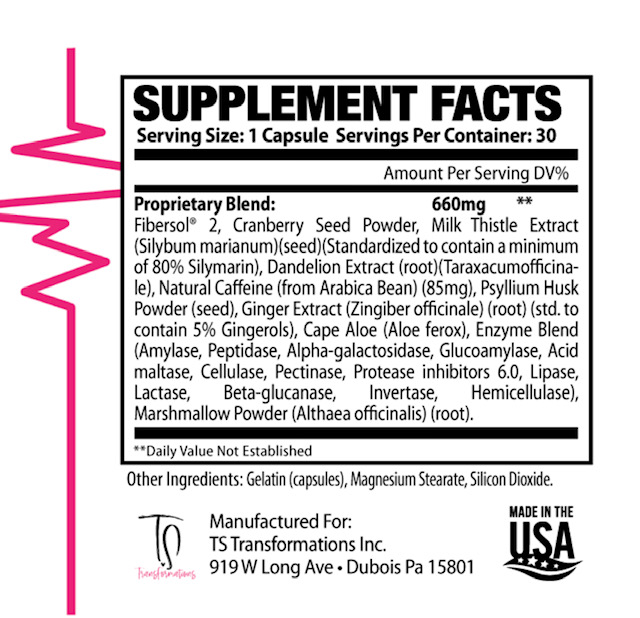
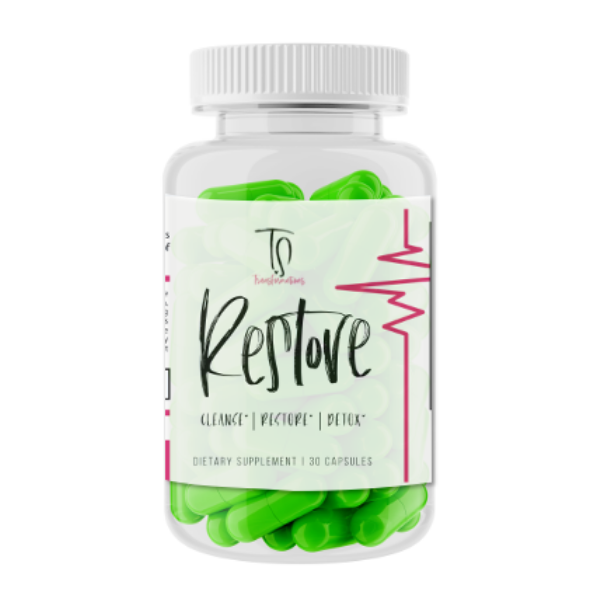
Product Description
RESTORE will help clean up the gut, known for stalling your weight loss efforts! RESTORE has a gentle detoxing effect that naturally cleanses the body so it is better empowered to restore itself to optimal homeostasis. It’s also packed with beneficial bacteria to help replenish the gut microbiome, which is vital for overall health and strong digestive and immune system support!
Take one capsule with SLEEP before bed.


